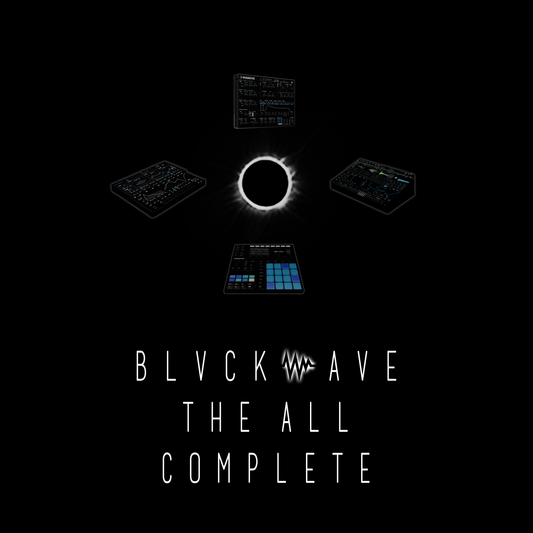
ADD ONE NOTE TO SIMPLE CHORDS FOR MELANCHOLIC EMOTION
ADDING A SINGLE NOTE TO A SIMPLE CHORD TO ADD EMOTION
If you are a music producer, then you are very likely also a musician who can play an instrument or multiple instruments very well and this blog will serve as a review, or new way of looking at what you already know. However, there are plenty of beat-makers out there who call themselves "producers" despite not knowing the first thing about playing an instrument or producing an actual record.
Usually this type of producer thinks dragging a Splice Loop over another random Drum Loop from your stock presets is “PRODUCTION” because they once got a “Placement with a big Tik-Toker" doing it that way. ...And they're not wrong. You CAN make it as a producer and not know how to do anything these days; But thats not what we do here at BLVCKWAVE. We at least TRY to make actual original timeless music... (Before ultimately reaching for a shitty Splice loop anyway lmao)
I mean, YOU EXIST. Like… bruh... YOU. EXIST. That's crazy. Do something with that.
You can open and close your f*cking hand using electromagnetic conscious energy! Use that GIFT to make something real and original with your heart and soul. If you can open and close your damn hand, you don’t need to be using some shitty splice loop... At least not for this beat today. But do try using a shitty Splice loop at some point and LEARN HOW TO FLIP SAMPLES "HERE" as you listen to me rant from the exact opposite perspective as I defend samples and loops.
Anyway, use whatever you want, but for now use the magical electromagnetic force in your homosapien hand to open up a VST or MIDI instrument and lay down some bullshit TRIAD chords In the key of C.
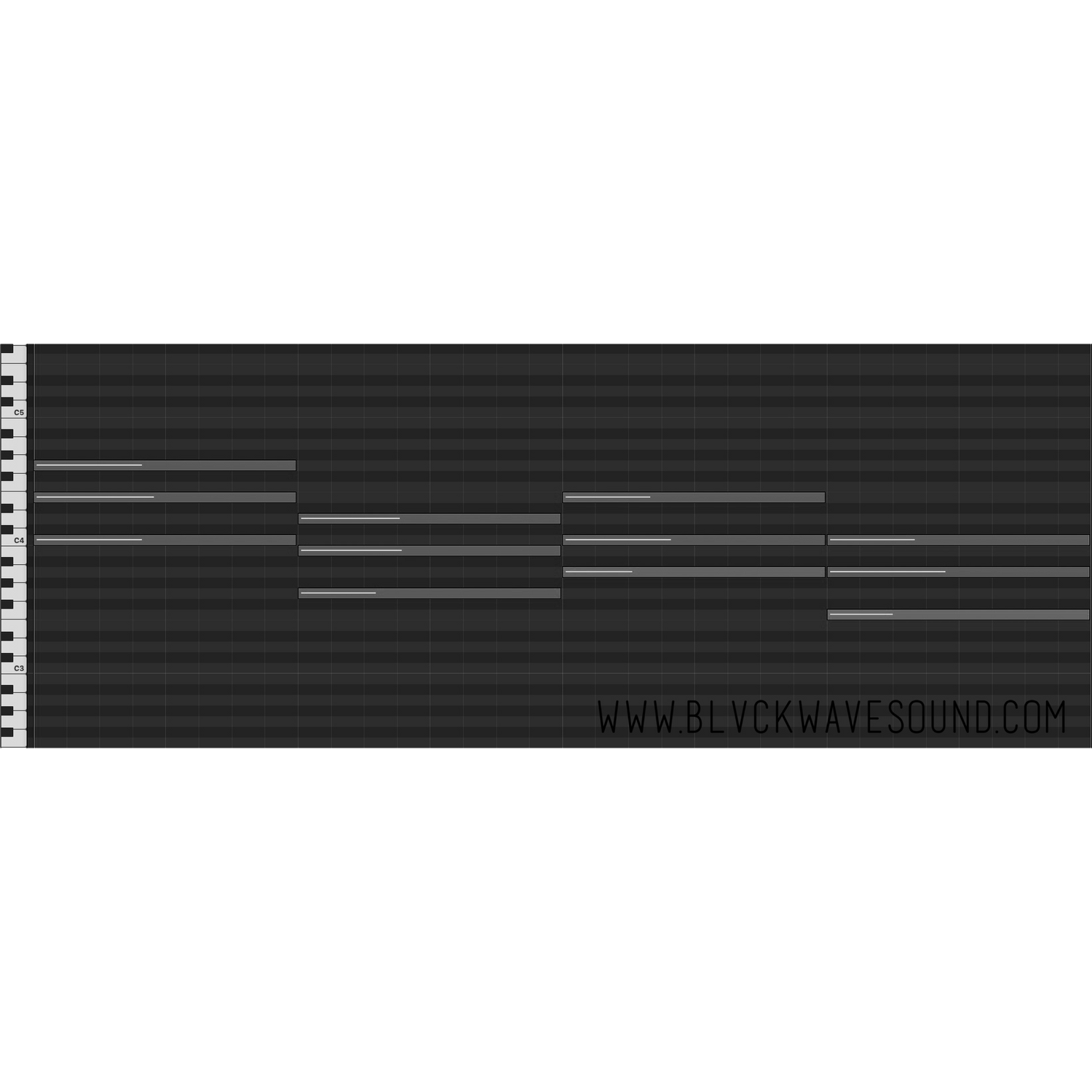
EXAMPLE 1
For this example, let’s go ahead and use a I, V, vi, IV, (1, 5, 6, 4) Chord progression in root position.
Don’t worry about CHORD INVERSIONS for this example.
If you call yourself a “music producer” and are unfamiliar with diatonic chords or what a "key" is; you are not actually a music producer. You are a beat maker; and the first set of chords you need to learn to begin your transformation into a full fledged music producer are as follows:
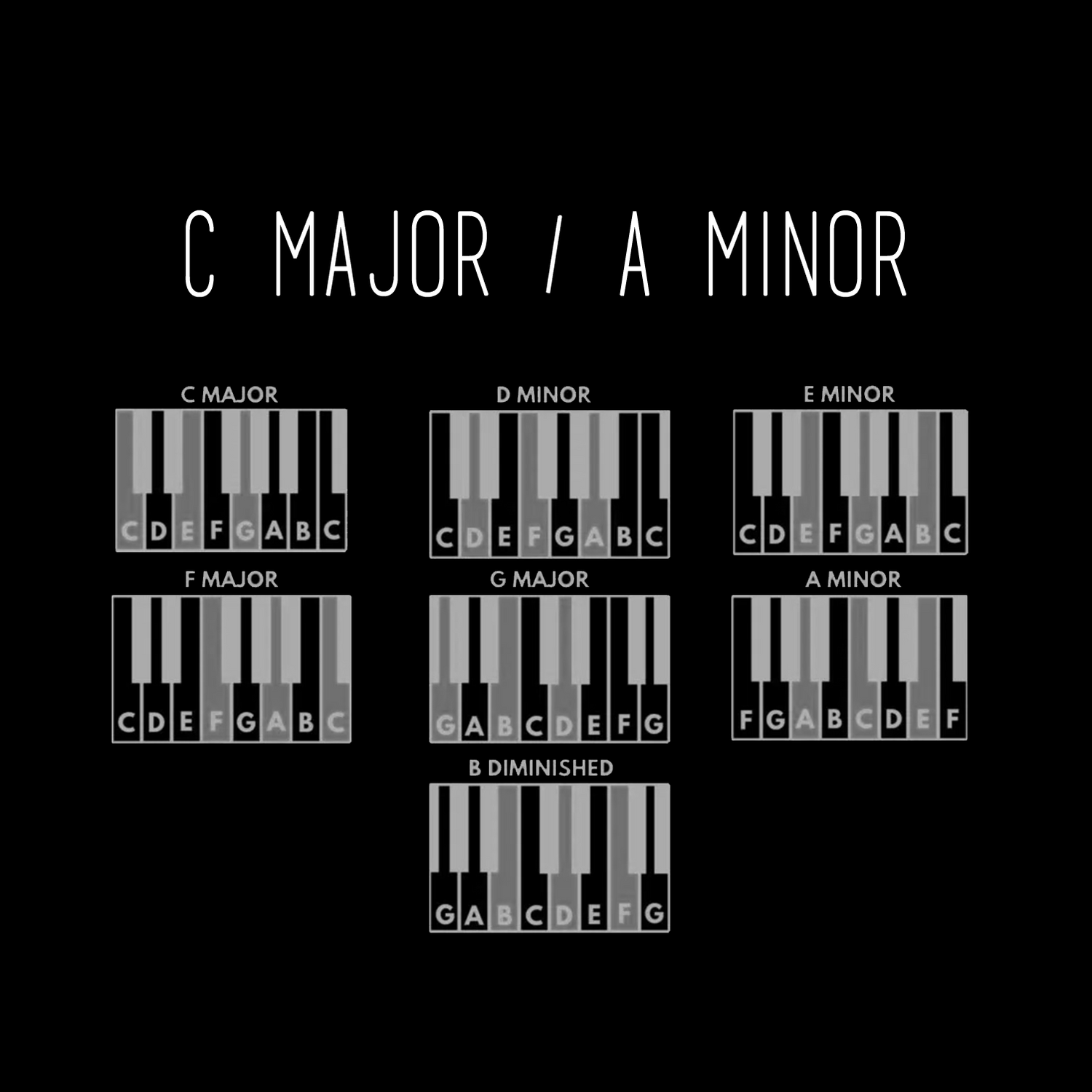
STEP 1: Learn this set of baisc chords and remember them forever
- KEY OF C / A minor
- C Major = C = 1 = I (MAJOR ROOT)
- D minor = Dm = 2 = ii (lower case Roman numeral or letter denotes minor chords)
- E minor = Em = 3 = iii
- F Major = F = 4 = IV
- G Major = G = 5 = V
- A mInor = Am = 6 = vi (MINOR ROOT)
- B Diminished = Bdim or B° = 7 = vii°(degree symbol denotes diminished)
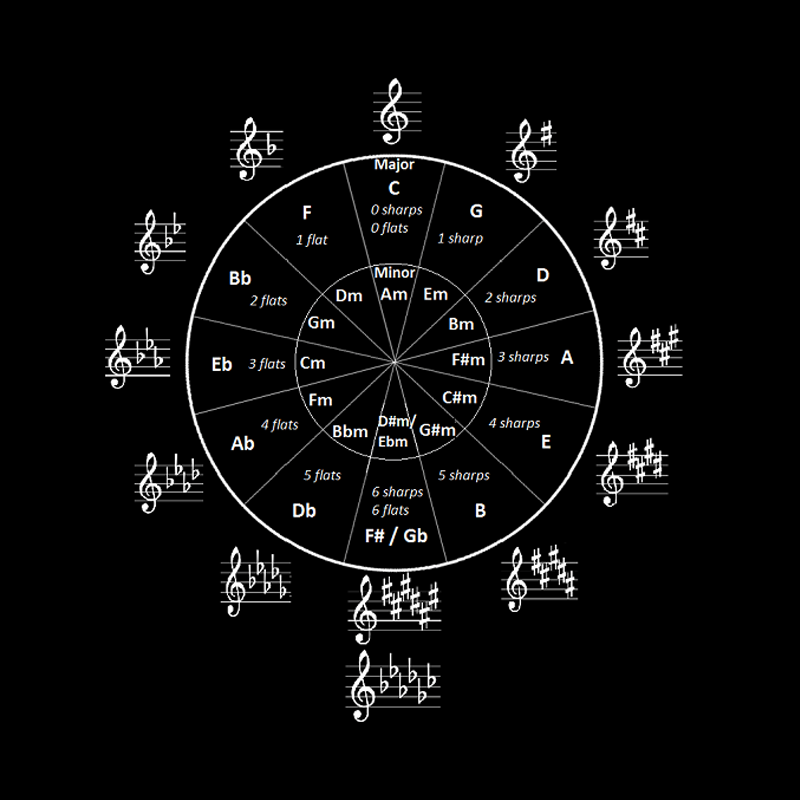
STEP 2: If you are interested in becoming a proficient all around "musician" you can reference this chart which has the sharps and flats of every diatonic key.
If you are just trying to make fire tracks in any key other than C major / A minor; you can skip this whole process and easily use the "TRANSPOSE" feature on your midi controller or the track on the DAW itself to find the proper key for your song and still be able to use the key of C / Am chord shapes (all the white keys) on your MIDI controller and disregard this entire chart.
You can also use this trick to learn common; but sometimes seemingly complex and advanced “BROKEN MUSIC THEORY RULES” and put them into context. Transposing anything back to the KEY OF C/Am can make those “magic chords”, "exotic scales", and “weird modulations” seem less esoteric and much more reachable.
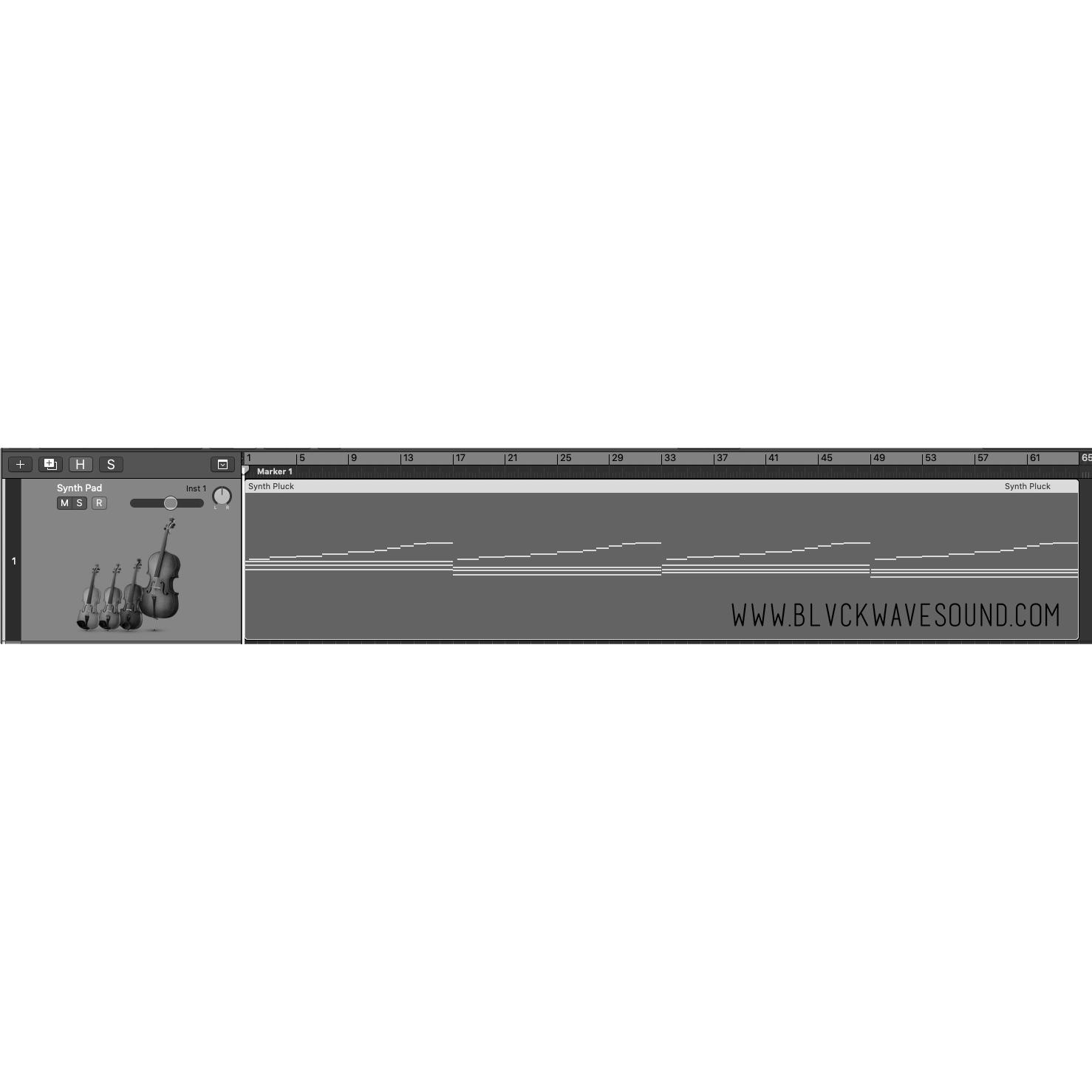
STEP 3: So, now that we have a C, G, Am, F progression written out in our piano roll. Make each chord 16 bars long.
We should now have a total of 64 bars for our exercise.
Now, ascending up the scale in the key we are in. (In this case we are in the KEY OF C) add the entire series of the scale's notes. (In this case C D E F G A & B)
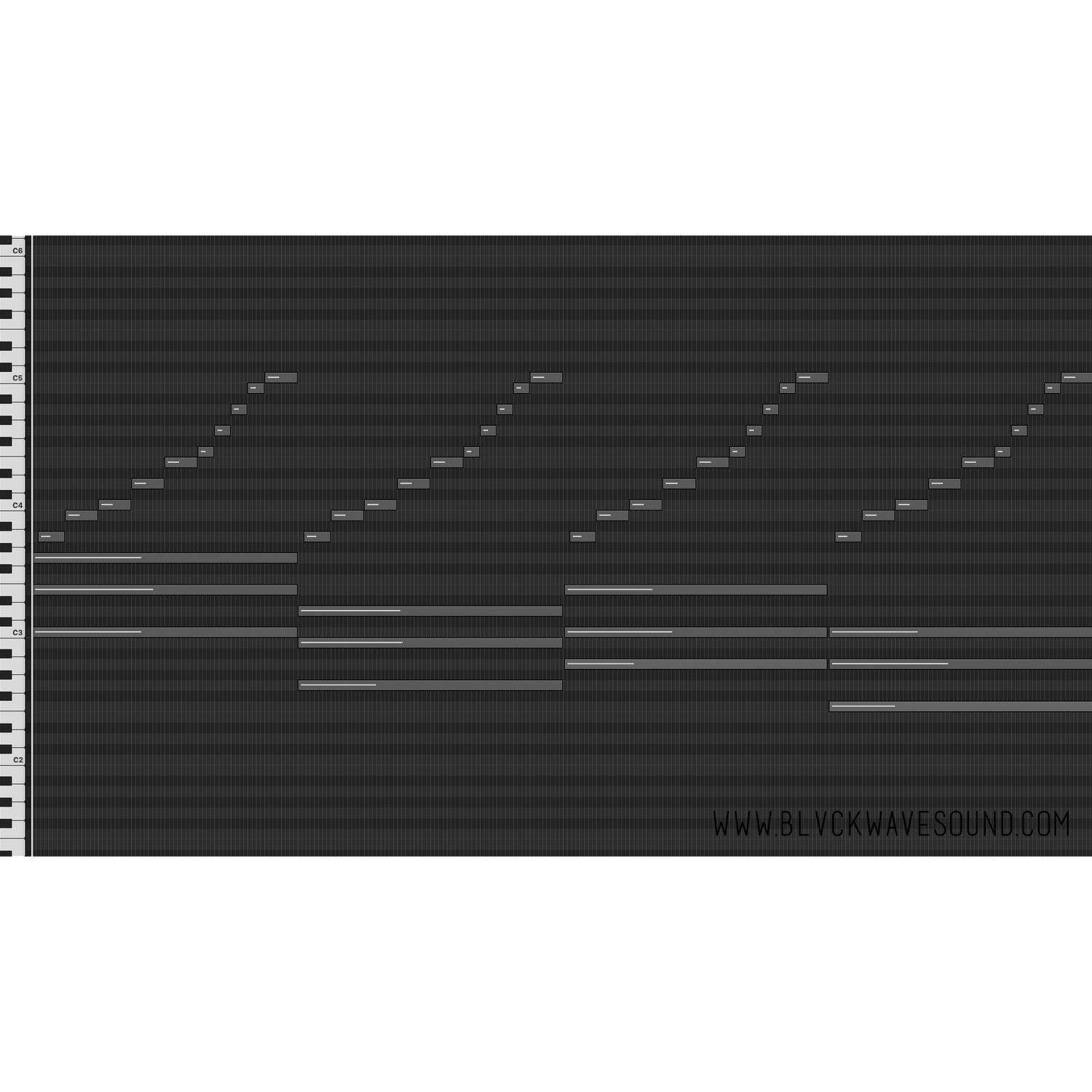
This 64 bar exercise gives us an audio example of how every diatonic chord extension sounds when placed over each of the 4 chords. We are simply climbing one note up the scale every two bars until we reach our 16th bar then repeating the process with each chord.
Now repeat this same exercise with different chord progressions OR even ALL 7 diatonic chords in the key of C / Am. You will notice every chord sounds "good" and seems to fit in a chord family.
Use this not only to learn your composing options, but to start training your ears to recognize the intervals within the chords so you can figure out your favorite ideas faster.
EXAMPLE 01

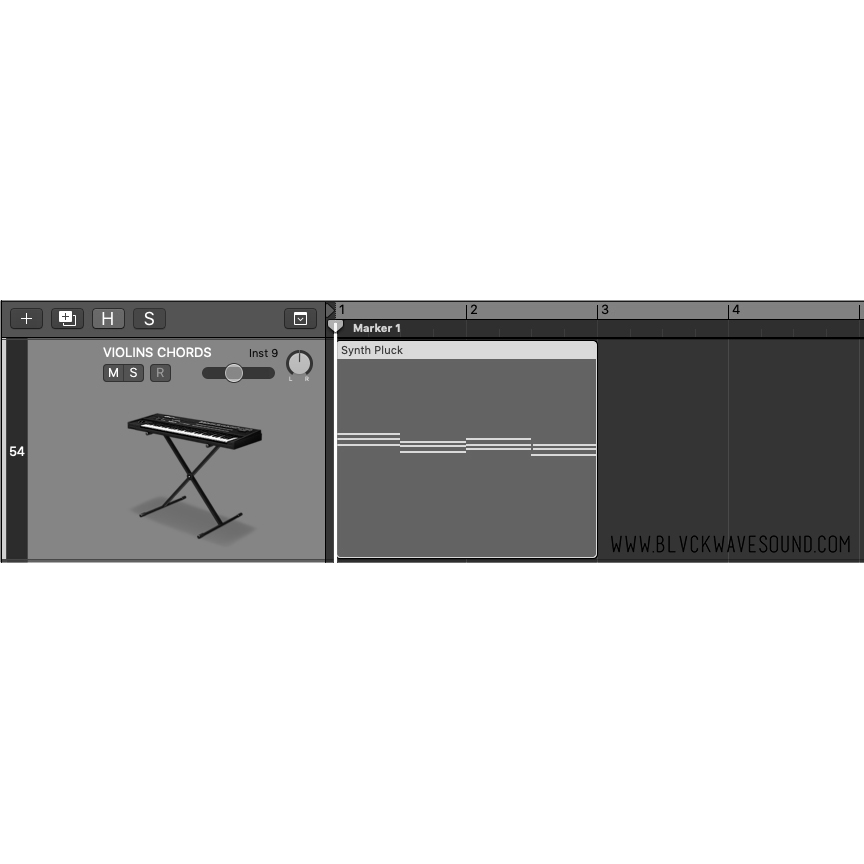
EXAMPLE 2
STEP 1: Take the same 1, 5, 6, 4 progression in the Key of C major / A minor, but this time make the length of each chord 1/2 of a bar. Now, each 4 chord cycle should only play for a total of 2 bars.
Once we have our 2 bar cycle, go ahead and duplicate or copy it out as many times as you want to jam on it. We will now begin drawing in the ascending notes of the C Major/ A mInor diatonic scale.
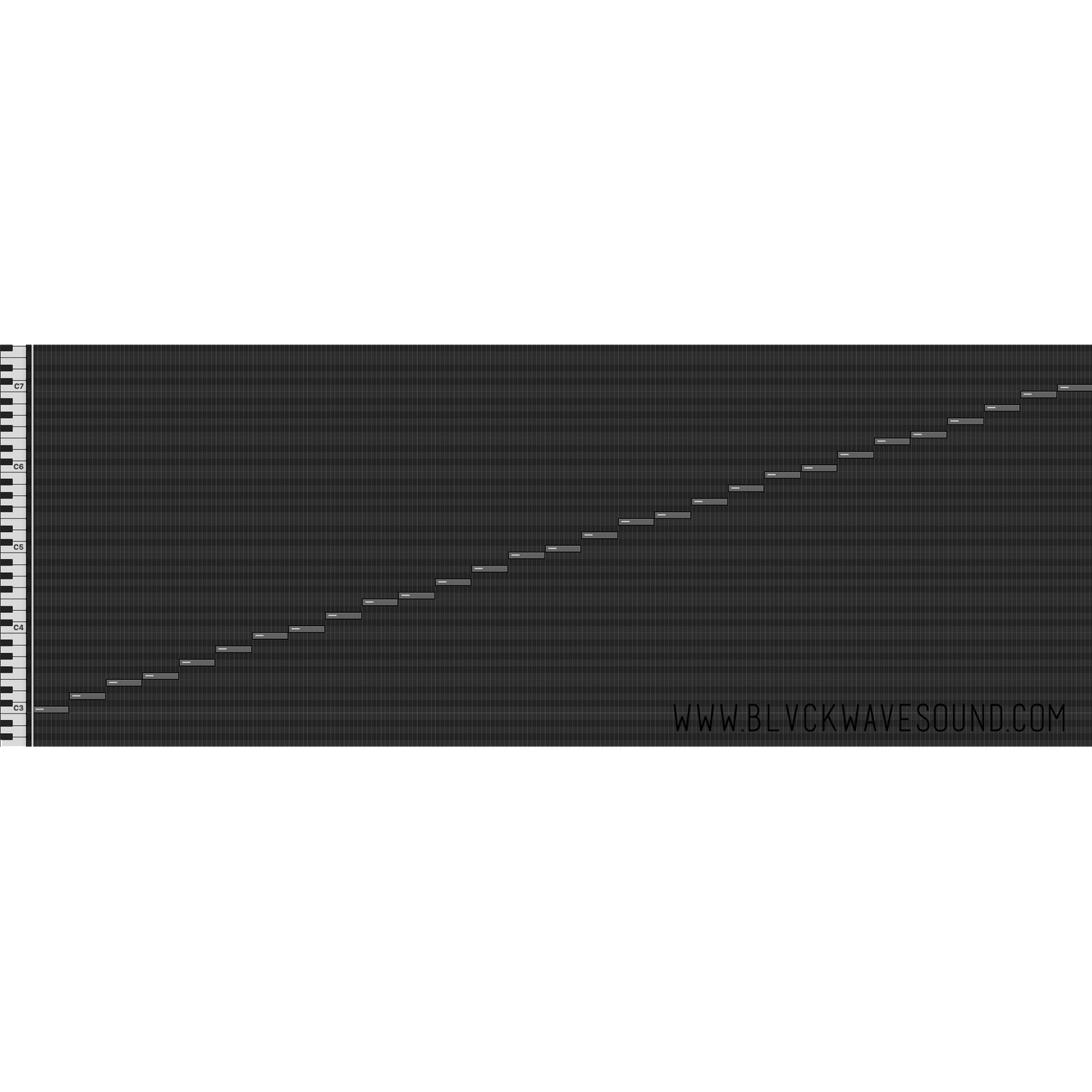
STEP 2: In this example I created two separate instrument tracks.One for the chords, the second for the melody.
Use this second new track to draw out the notes of the C Major / A minor scale so that each DRONE note lasts a full 4 bars.
By doing this you will hear how each note in your key interacts with the underlying chord progression. Try this same exercise using any chord progression in the key you working are in. When you find cool combos, simply follow the same math throughout your chord progressions for amazing results.
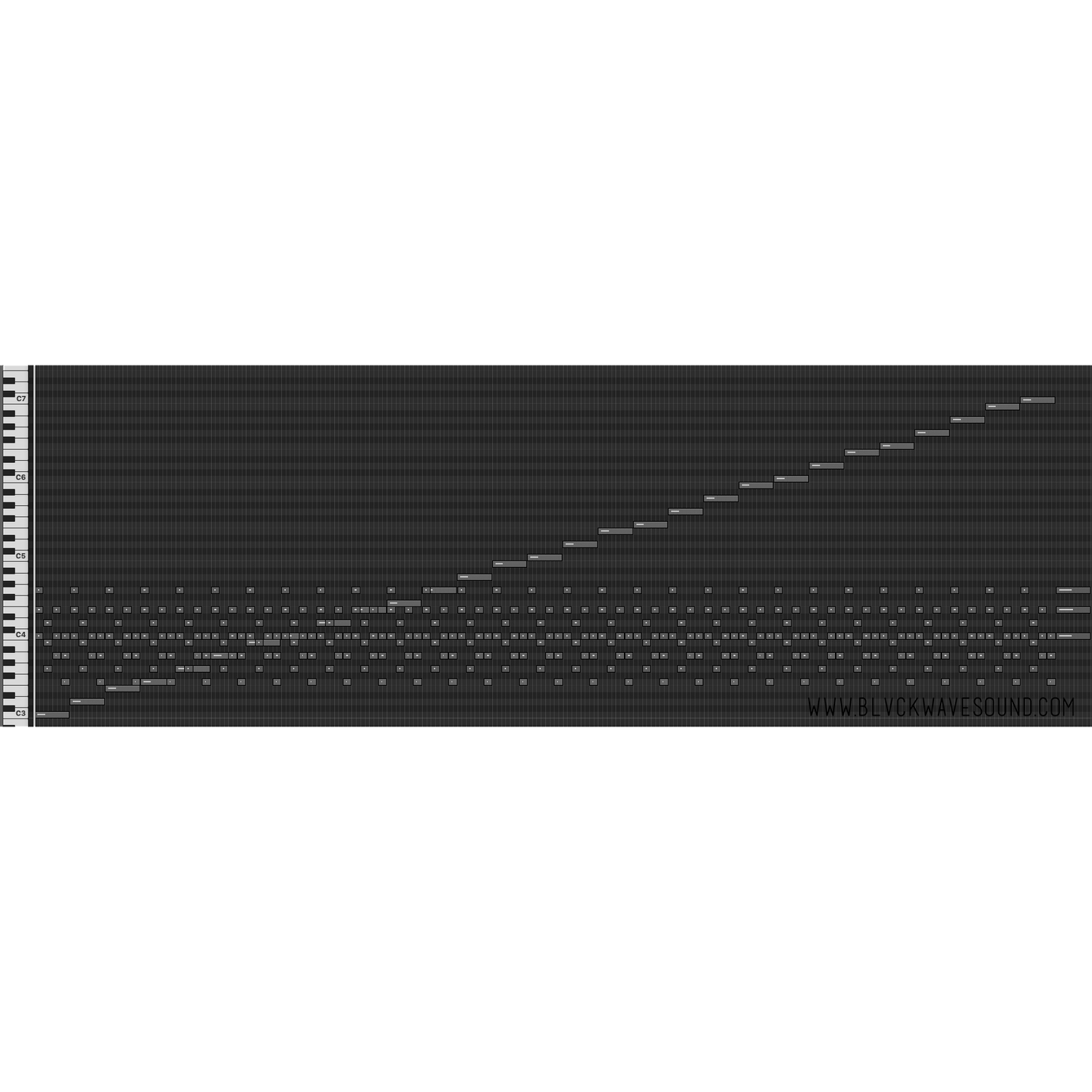
STEP 3: Just for the visual example; this next image displays both sections overlaid on top of each other.
I would personally never compose something like this in a single instrument track though. This is simply an overlay of both tracks to see what is going on on a meta scale.
In your actual project or song when you start using these techniques it may be valueable to spread these voicings out over multiple patches of many different instruments. This process is more or less the beginning stages of what we would call the “Arrangement” in the production world.
You can dive deeper into what “ARRANGEMENT” is HERE and start to learn how to weave music together with different instrument groupings, stylistic chord choices, and unique rhythms to create an original sound all your own.
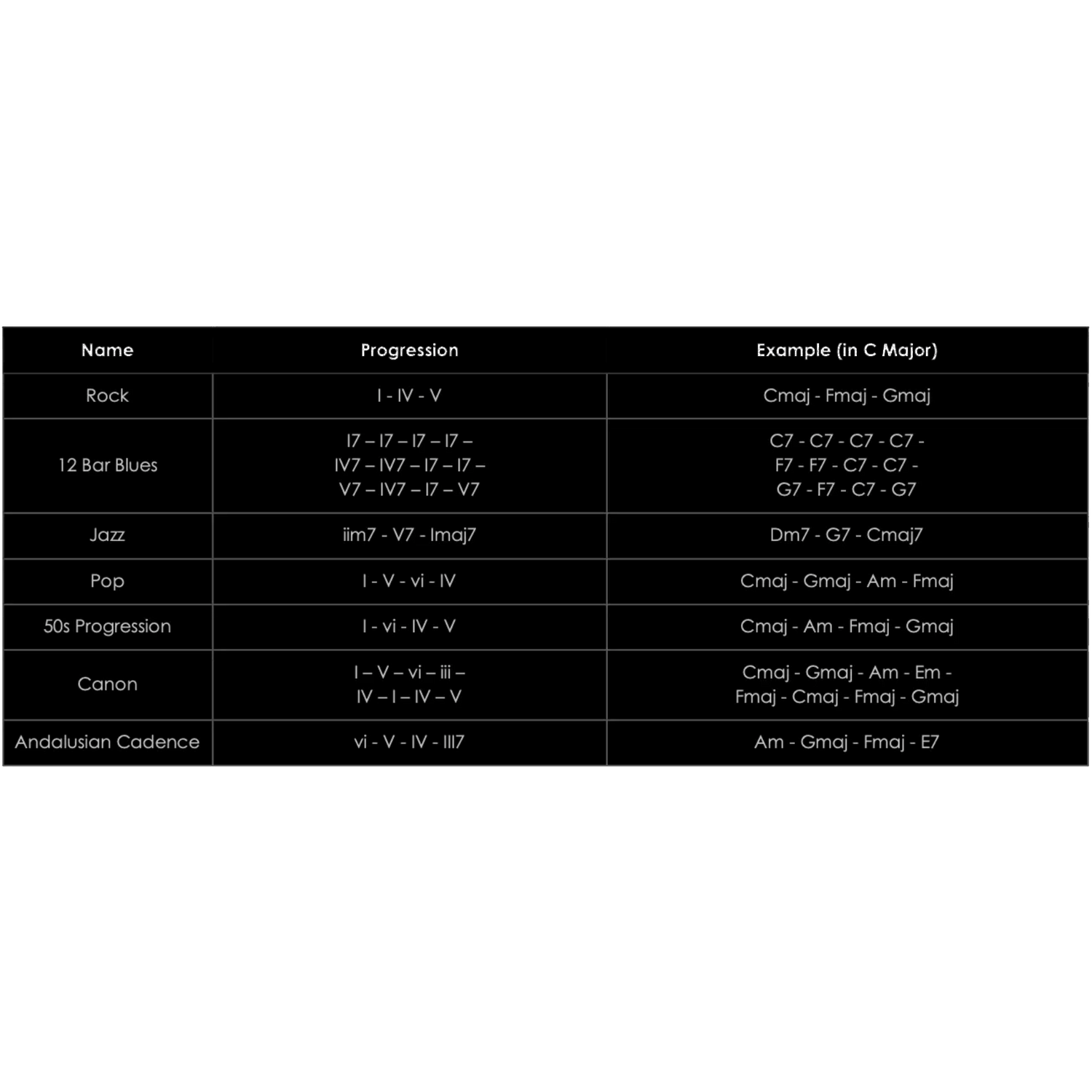
STEP 4: Another good exercise you can combine with this would be creating your own combinations of chord progressions within this KEY OF C / Am. Then ADDING your favorite "one notes" over top of them to see what kinds of new progressions you can come up with.
For TRAINING YOUR EAR, I feel 2,3, or 4 chord; 4 bar loops are best. To start; Try laying down any 4 chords within a 4 bar loop sequence IN your chosen key (C/Am), played in any order. Yes you can play the same chord two bars in a row.
The chart to the side gives some more progressions that have been commonly found in famous recorded music. Some of these progressions will even introduce the black keys!
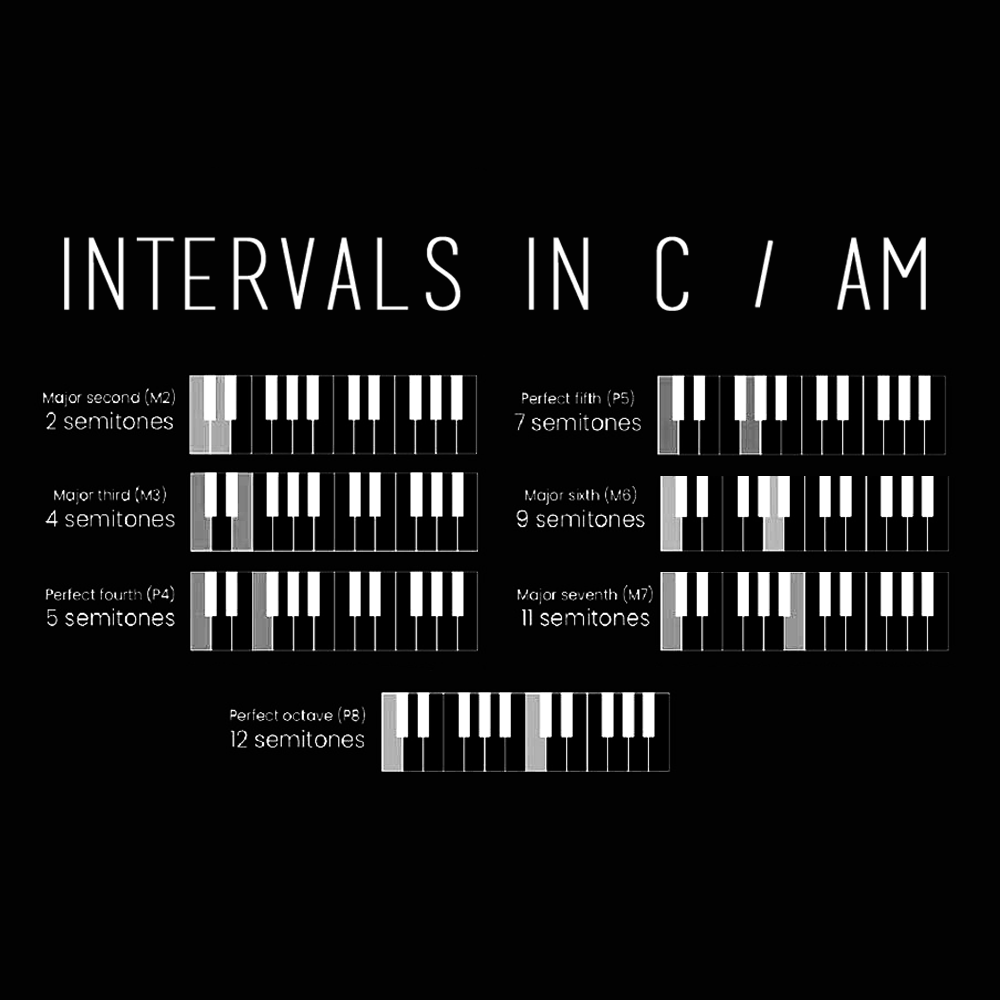
STEP 5: When starting out it may be useful to use the 1 chord (MAJOR ROOT) or the 6 chord (MINOR ROOT) as the first chord in the progression. By using this “beginners rule” it will help your ear establish your MAJOR and MINOR root chords for a particular key. The nice part of this is that once you can ‘HEAR” and recognize the chords in one key. You will begin to hear them in all keys;
Another great way to level up your ears is training them to hear intervalic chord changes. Or the distances in between the notes and chords. Check out the chart to the side to learn the names of all your intervals. To stay in the "key of C/ Am" only apply the white keys. (You can learn more about intervals including the names of ALL of them HERE)
EXAMPLE 02

POPULAR BLVCKWAVE PRODUCTS
To see our full selection view the BLVCKWAVE STORE HERE and get our FREE SAMPLE PACK sent to your email!
-
BLVCKWAVE CORE - COMPLETE
Regular price $999.99 USDRegular priceUnit price / per -
BLVCKWAVE MASSIVE - COMPLETE
Regular price $149.99 USDRegular priceUnit price / per -
BLVCKWAVE SERUM 1 & 2 - COMPLETE
Regular price $199.99 USDRegular priceUnit price / per -
BLVCKWAVE - THE ALL COMPLETE
Regular price $1,333.33 USDRegular priceUnit price / per



